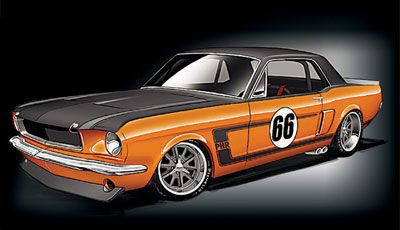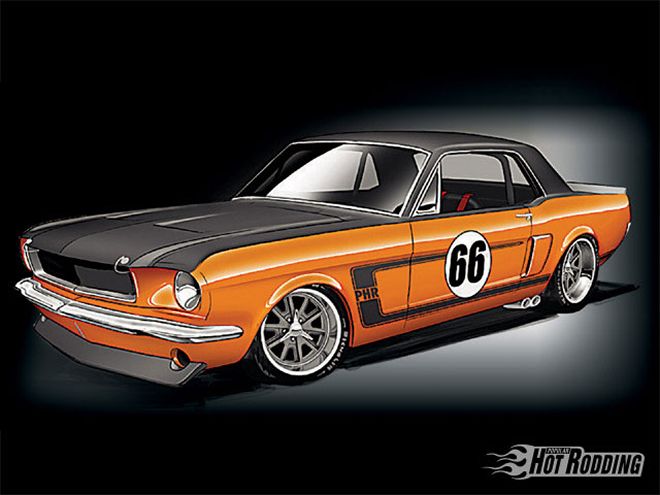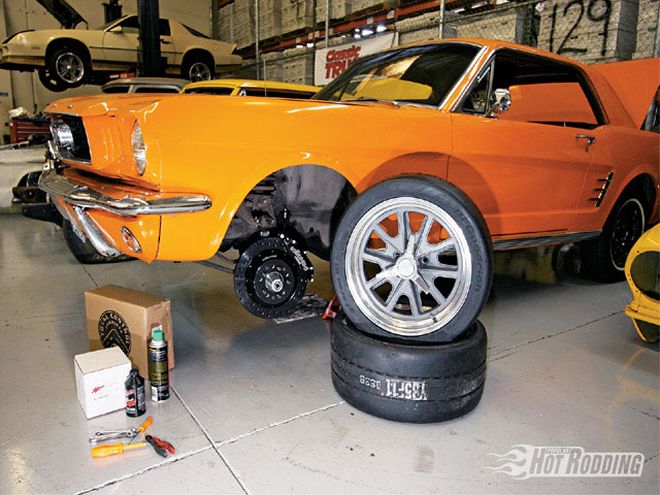

Street Fighter
Newton's first law of motion states that an object in motion stays in motion, unless acted upon by an outside force. What does that mean for car building? Sure, gravity and wind will eventually slow a car down, but you need to build the braking system equally, or more impressively, than the acceleration system. This is often overlooked when trying to make your car fast-you truly don't know the importance of good brakes until you don't have them.
One fast lap at any road course will show you exactly how brakes fail. Coming up on the first turn after the straightaway, you'll brake hard to make the turn. The next couple braking zones may go smoothly, but once those brakes start to get hot, the pedal will get soft, and the brakes will eventually fail. This is called brake fade. On the street and at the dragstrip, fade is less of an issue, because the brakes aren't being applied repeatedly. One pass every hour at the track won't heat your brakes enough to show fade. Street driving shouldn't use enough brake to exhibit that problem either. Our project Street Fighter Mustang, on the other hand, will need to have exceptional brakes to survive what we will be putting it though.
For the most part, bigger is better when it comes to braking systems. The greater the rotor diameter, the more leverage the caliper has on it, and the more heat it can dissipate. The downside to oversized rotors is that it adds unsprung and rotational weight-the most important weight to keep off. Luckily, many aftermarket brake setups use aluminum hubs and adapters, so the overall weight may be the same or less than the stock assembly.

This month, our '66 Mustang-Project Street Fighter-is getting a much-needed brake upgrade. The '66 was equipped from the factory with a single-master cylinder, manual four-wheel drum brake setup. Let's just say the force necessary on the pedal to slow the car at a normal stoplight was enough to equal a workout at the gym. Since we plan on tracking the car, we needed a more substantial set of brakes. We turned to Wilwood for direction. We knew we would be running Vintage Wheel Work's V60 17-inch wheels, so 13-inch rotors and six-piston calipers could be used with ample clearance. The single-reservoir master cylinder wouldn't be compatible with the new brakes, so we used their bolt-in 1-inch bore, dual-reservoir master cylinder. Along with the brakes, we are replacing the factory spindle with Total Control Products' direct replacement spindle that uses the '70-73 Mustang's larger bearing. The Wilwood kit is designed for this specific spindle as a bolt-on installation.
We encountered some hurdles, and gained some knowledge through this installation, one thing being that six-cylinder Mustangs don't have the same steering components as the eight-cylinder models. With every project there are mistakes that will be made; that's why we're here to make them for you.
Bleeding Brakes
Bleeding the brakes is the last and most important step to ensure your brakes' performance. Modern brakes use hydraulic fluid to transfer the force applied from the brake pedal to the brake pad. The reason this works is that the fluid doesn't compress. When changing a line or draining the fluid, air enters the system. Unlike the fluid, air does compress, so if it's left in the lines, you'll get a soft, spongy brake pedal. The process for bleeding is simple. Starting with the wheel farthest from the master cylinder, slip a tube over the bleeder and keep a wrench handy to crack it open. Instruct the person helping you inside the car to slowly pump the brakes a couple of times, then hold the pedal down firmly. When they are holding it down, crack the bleeder open, then close it immediately. Repeat this process until no air comes out of the tube. Continue this process on each corner of the car. For calipers with two bleeders, start with the outboard one first. Throughout this process, regularly top off the master cylinder reservoir with fluid, and check for leaks.